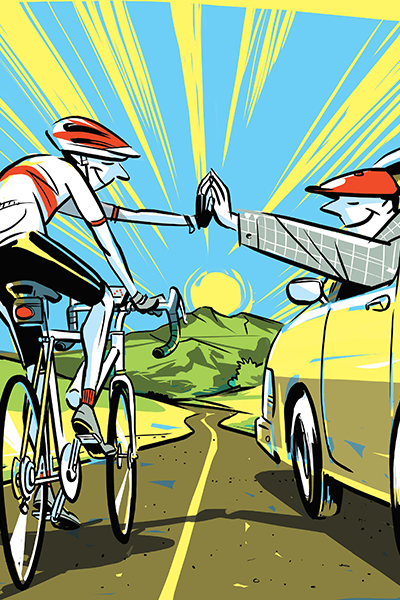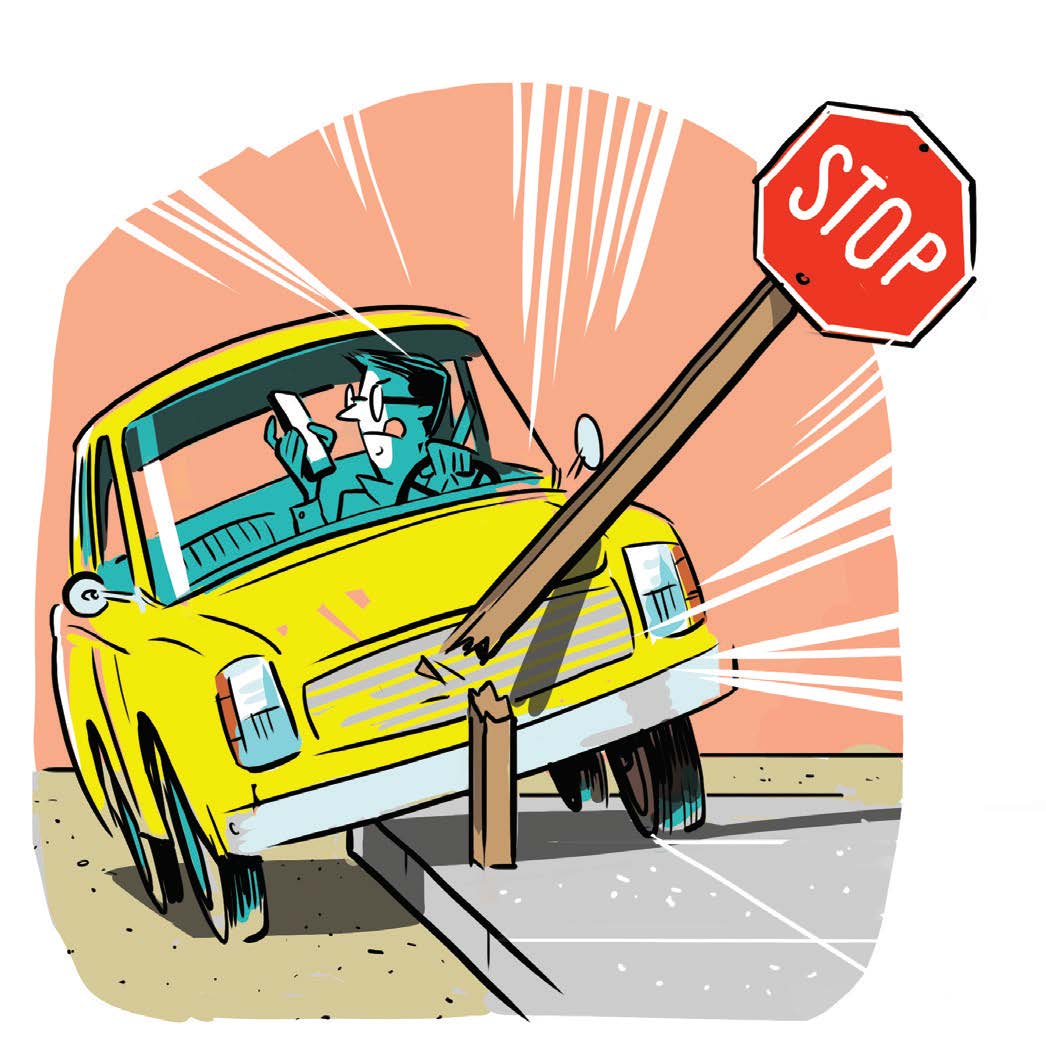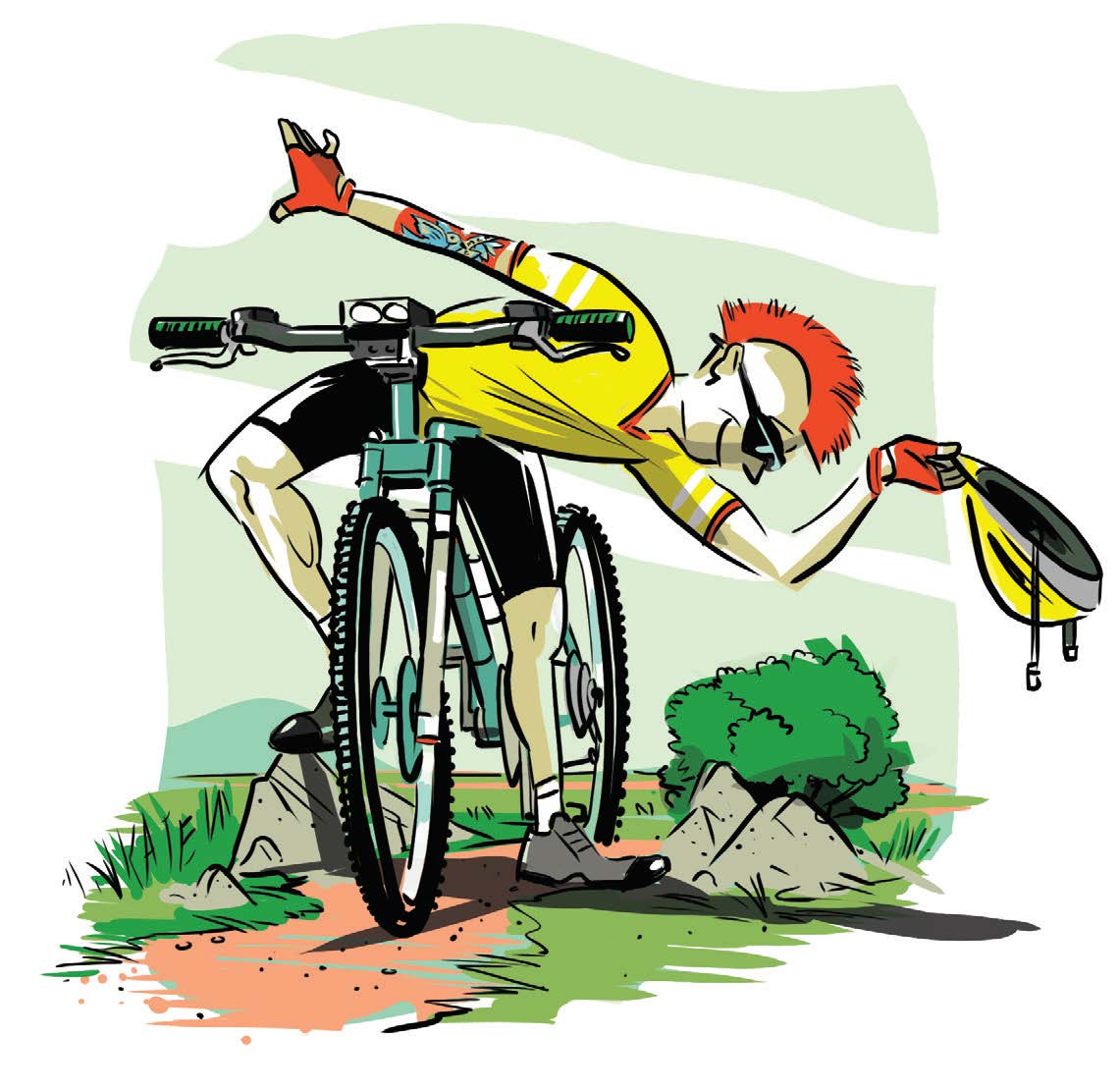THE JUDGE ENTERED the courtroom; the jurors were seated.
“The people call James O’Connor,” intoned Kendra Rudolph, the prosecuting attorney.
It was a June morning in 2015 in Marin County Superior Court. O’Connor, a firefighter and paramedic with the Southern Marin Fire Protection District, was sworn in, then asked to recount the events of April 16, 2014. Working with an ambulance crew that day, he responded to a reported assault in Mill Valley, at the busy intersection of East Blithedale and Camino Alto.
There, they found Roman Laskowski, a 55-year-old carpenter, “leaning up against a concrete wall,” recalled O’Connor. “He was bleeding from a laceration on the bridge of his nose,” which appeared to be “deformed.” “When you say his nose was deformed …,” asked Rudolph, nudging the witness to provide jurors with a more graphic description. “It was pushed over to one side.”

Seated nearby in the courtroom, listening impassively, was Jeffrey Smock, the 41-year-old tech executive who’d rearranged Laskowski’s face for him. Handsomely tanned, impeccably groomed, Smock also bore the slightly ascetic aspect of a serious endurance athlete. Indeed, he’d been near the end of a three-hour ride when he was passed — much too closely — by a pickup truck. After clipping Smock with his side mirror, Laskowski kept going. (He later told O’Connor that he’d put away three beers with his lunch, several hours earlier.) While ensuing events remain in dispute, this much is not: after overtaking the truck, which was stopped at a red light, Smock beat the 190-pound Laskowski senseless — despite giving away 25-or-so pounds to the contractor. Say what you will about Smock, the man punches well above his weight class.
This feat failed to make a good impression on the jury, which eventually convicted him of felony battery (Smock was found innocent of a more serious charge: assault likely to cause great bodily injury). Even with his lack of a criminal record and the fact that no weapons were involved, Judge Kelly Viera Simmons sentenced him to 90 days in the county jail. While far more lenient than the nine months the prosecutor sought, it was still a harsh toke for a man who’d already suffered a great deal, according to Smock’s lawyer, Gerald Schwartzbach, who lamented, “He’s become a poster boy for everyone who hates bicyclists and resents rich people.”
I regarded Smock not so much as a poster boy but as a Rorschach test: what you think of him tells us something about where you come down on the matter of bikes vs. cars. Because this is an issue that hits close to home for me, I attended that trial for a couple of days. I ride a lot, running errands around town on a cruiser bike and logging significant miles on my mountain and road bikes. It is the exception rather than the rule, on my long road rides, when my safety is not endangered — at least once, often more than once — by a motorist pulling out or turning left in front of me or by passing too close. (On September 16, 2014 — five months after Laskowski buzzed Smock — California passed a law requiring drivers to stay three feet away from cyclists.)
Sometimes, the offending driver is oblivious — texting, daydreaming, reaching toward the cup holder for a skinny vanilla latte. And sometimes he or she is flat-out hostile, buzzing or cursing me out the window because, well who knows why? Maybe that person had a crappy day, or is a chronic misanthrope, or simply dislikes the idea of sharing the road with bicyclists. True confession: when I heard that a cyclist had punched out the driver of a pickup truck who’d clipped him with his mirror and then failed to stop, a small part of me applauded.
That was wrongheaded, I admit. Violence, unless practiced in self-defense, is never the answer. As Judge Simmons admonished Smock, “This was a vicious beating and Mr. Laskowski did not deserve it.”
What is the answer, then? We can continue to raise awareness that we have a right to be on the road, that in a country where automobile traffic and obesity are at all-time highs, bikes are part of the solution.
 And we can look in the mirror. While I’m convinced that cyclists are, like King Lear, more sinned against than sinning, I also know I can do more to ride safely, obey traffic laws, and promote more goodwill between motorist and cyclist. I can stop extending one-finger salutes to drivers who tick me off. (Maybe just sort of shrug at them, as if to say, “really?” and hope they notice in their rearview mirror.) I can, in short, embrace the Spirit of Howdy, the warm ethos of the National Interscholastic Cycling Association, the body governing high school mountain biking. That spirit calls upon team members to ride with courtesy and consideration — to obey posted signs and, upon encountering someone else on the trail, to “slow down enough so you can say hello, and they can say hello back,” in the words of NICA founder Matt Fritzinger. “Work to have a friendly interaction. Add to their day with kindness.”
And we can look in the mirror. While I’m convinced that cyclists are, like King Lear, more sinned against than sinning, I also know I can do more to ride safely, obey traffic laws, and promote more goodwill between motorist and cyclist. I can stop extending one-finger salutes to drivers who tick me off. (Maybe just sort of shrug at them, as if to say, “really?” and hope they notice in their rearview mirror.) I can, in short, embrace the Spirit of Howdy, the warm ethos of the National Interscholastic Cycling Association, the body governing high school mountain biking. That spirit calls upon team members to ride with courtesy and consideration — to obey posted signs and, upon encountering someone else on the trail, to “slow down enough so you can say hello, and they can say hello back,” in the words of NICA founder Matt Fritzinger. “Work to have a friendly interaction. Add to their day with kindness.”
“I know it sounds cheesy,” says Rob Reed, a co-head coach of the defending California state high school champion Drake Pirates mountain biking team, “but the ‘howdy’ thing really works. You’ll see an elderly woman walking her dog on the trail; here come what she’s thinking are some punk mountain bikers, and they all slow down, smile and say hello. I’m a skeptic but I’m telling you, it works every time.”
I’ve had similarly cordial encounters with riders from Branson, San Domenico, and two-time state champion Redwood, whose mountain biking team director, Julia Violich, agrees that “a couple bad eggs can ruin it for all.” Every year, early in the mountain biking season, she drives home a message to team members. “I tell them they are ambassadors for their sport the second they throw their leg over the top tube. They are now part of a larger community and their actions have a ripple effect throughout the sport.”
Around these parts, high school riders are made to understand that when they clip in and start grinding up Eldridge Grade or take on the technical challenges of the Tamarancho loop, they are standing on the shoulders of the pioneers whose advocacy earned the right to ride in Marin’s transcendent open spaces. Before joining their teams, high school riders must sign a form agreeing to follow rules that include riding safely, and on legal trails. Poaching illegal trails, warns the Pirates website, “puts all local mountain biking at risk. Riders caught riding illegal trails will immediately lose team riding privileges.”
How to transplant that sense of shared purpose and goodwill to the pavement? How to get that message to the adults? That is one of the central missions of Marin County Bicycle Coalition, whose executive director, Jim Elias, told me, “I cringe when riding with others and someone ignores the rules of the road. Because, fairly or unfairly, their behavior reflects on all of us. So it’s imperative that we conduct ourselves in a way that we’d be proud to put in front of our kids.”
 MCBC’s programs include Safe Routes to School (which last year alone taught 9,000 elementary and middle-schoolers how to ride safely), Basic Street Skills classes (taught primarily to bikers who’ve been ticketed, in exchange for reduced citations), and Share the Path, developed to educate Mill Valley–Sausalito Pathway users about riding at safe speeds and passing predictably.
MCBC’s programs include Safe Routes to School (which last year alone taught 9,000 elementary and middle-schoolers how to ride safely), Basic Street Skills classes (taught primarily to bikers who’ve been ticketed, in exchange for reduced citations), and Share the Path, developed to educate Mill Valley–Sausalito Pathway users about riding at safe speeds and passing predictably.
We can wear stridently colored clothes and bedeck our bikes with blinking lights. We can slow down, ride defensively, use hand signals, smile brightly and dispense countless howdies. It won’t matter if the folks driving the cars don’t make a corresponding effort to start seeing bicycles, to get “woke” to the idea that they don’t own the roads.
And let’s not fall prey to false equivalence: operating a 20-pound bike like a jerk and operating a half-ton car like a jerk — these actions have very different consequences. “There’s no excuse for cyclists ignoring the rules of the road,” Elias says. “But when motorists do the same, it’s far more likely to end in tragedy.”
Dave Zabriskie emerged from a morphine-induced stupor in 2003 and saw a woman sitting beside his hospital bed. “She was sewing my nail beds back together,” recalls Zabriskie, a Tour de France stage winner and five-time U.S. National time trial champion. He’d been on a training ride in Utah, on a swift descent, when an SUV turned left in front of him. In addition to the multiple fractures he incurred in the collision, the fingernails in his left hand were torn out when “my fingers got stuck in the headlight.”
Zabriskie, who retired from bike racing in 2013, has endured “four or five” collisions with cars. He did not warm immediately to the question: what are our responsibilities, in the velo tribe, to foster more goodwill between cyclists and motorists?
“We’re so outnumbered,” he says. “It’s just really a hard fight to [wage]. Just stand on an overpass or at a red light someday and look around: everybody’s on their phone. The drivers of the cars are oblivious to other drivers,” he adds. His implication: good luck if you’re on a bike. “That’s why I’m pretty excited about these new self-driving cars.”
I laughed, but he was serious. “The beautiful thing about robot drivers is: one robot makes a mistake, and they all learn from it.”
Yes, it helps to conspicuously obey the rules of the road, he allows. But how much good is it really doing? “I’ll stop at a red light, and hope that some people at the intersection take note,” he says. “I’m only affecting a handful of drivers, but I guess it’s better than nothing.”
Of course it’s better than nothing! To increase the effect, deepen the goodwill, Dave Z might consider making eye contact with one or two of those drivers, then smiling and saying, “Howdy!”
This article originally appeared in Marin Magazine’s print edition under the headline: “Sharing the Road.“


